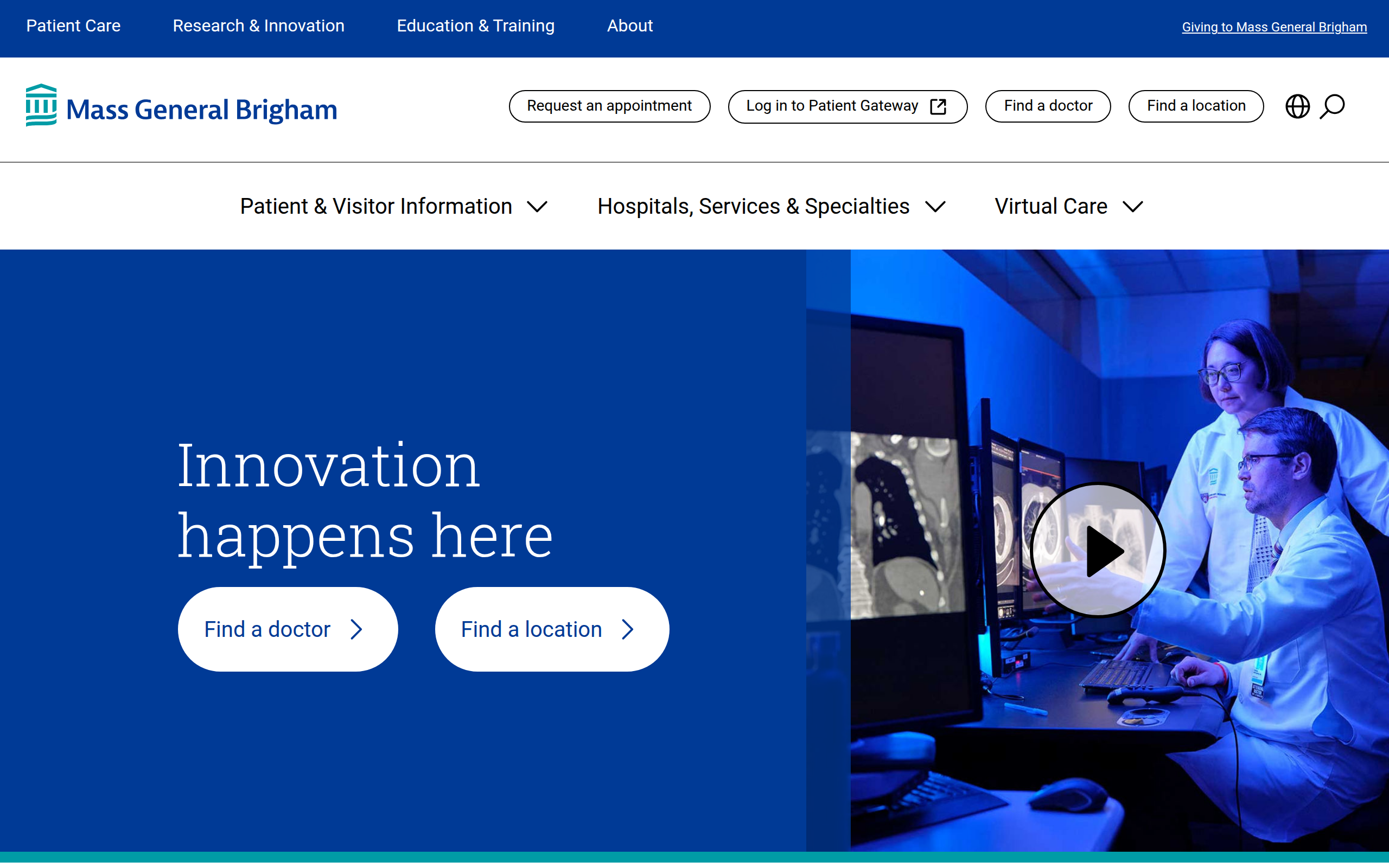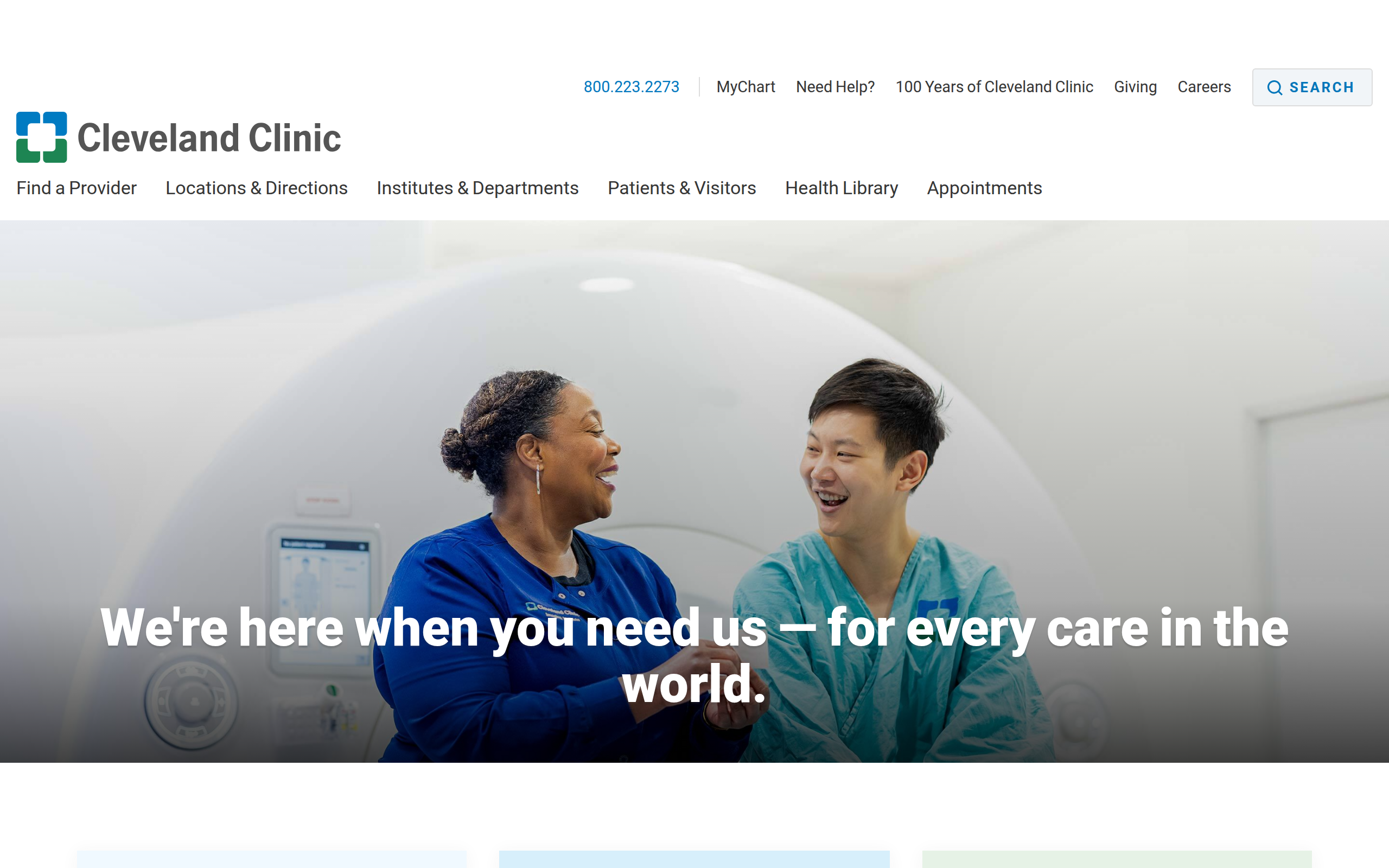Learn how to automate call routing in healthcare with IVR, AI voice agents, HIPAA-compliant routing, and EHR scheduling to cut hold times. Read more.

The conversation around artificial intelligence in healthcare has moved from future theory to present reality. Faced with persistent staffing shortages, rising patient expectations, and complex revenue cycles, health systems are no longer just experimenting with AI. They are deploying it to solve fundamental operational challenges. The most innovative hospitals that use AI, including leaders like Mayo Clinic, Mass General Brigham, and Stanford Health Care, are seeing profound results, not just in clinical settings, but in the administrative workflows that keep their doors open. From automating patient scheduling to verifying insurance benefits in record time, AI is becoming an indispensable tool for modern healthcare delivery.
When we talk about hospitals using AI, the applications are incredibly broad. Many people first think of clinical AI, which includes things like diagnostic imaging analysis, predictive modeling for disease outbreaks, and personalizing treatment plans. These are powerful, life saving technologies.
However, a massive and growing area for AI adoption is on the administrative side. This is where AI tackles the operational bottlenecks that cause staff burnout and patient frustration. These applications include:
Patient Access: AI voice agents can answer patient calls 24/7 with zero hold time, schedule appointments, send reminders, and even handle reengagement campaigns to fill provider calendars.
Revenue Cycle Management (RCM): AI can automate the tedious, phone heavy work of verifying patient benefits, initiating prior authorizations, and checking on claim statuses. This reduces denials and accelerates cash flow, see how Prosper supports medical billing teams.
Switchboard and Routing: Instead of confusing phone trees, conversational AI can understand a caller’s intent and route them to the right department or person quickly.
These administrative tools are critical because they free up skilled staff to focus on higher value, direct patient care.
For hospitals that use AI, successful implementation isn’t just about technology, it’s about trust. Adopting AI responsibly requires a commitment to a core set of principles.
AI systems must be designed and trained to serve all patient populations fairly, without introducing or amplifying bias.
In healthcare, accuracy is non negotiable. AI systems need rigorous quality assurance to ensure they perform tasks correctly. For example, platforms like Prosper AI build in AI-powered quality assurance on every single call to verify that benefits information or appointment details are captured with 99% accuracy.
Patient data is sensitive, so AI solutions must be fully HIPAA compliant. Leading vendors go further, achieving certifications like SOC 2 Type II and offering enterprise grade security features like end to end encryption and zero day data retention agreements with their partners.
Selecting the top hospitals that use AI involved looking beyond press releases. We focused on health systems demonstrating a clear strategy and measurable results. Our criteria included the scale of AI deployment, documented improvements in patient access or operational efficiency, a commitment to ethical AI principles, and a forward thinking approach to solving healthcare’s biggest challenges. The hospitals on our list are true leaders in leveraging technology to improve care delivery.
As artificial intelligence continues to transform healthcare, a select group of hospitals has emerged at the forefront of this technological revolution. These institutions are not just experimenting with AI but are deeply integrating it into their clinical practices to improve diagnostics, personalize treatments, and streamline operations. The following five hospitals represent the pioneers who are setting the benchmark for the future of AI-enabled healthcare.

Mayo Clinic, an integrated academic health system on Epic, anchors its AI strategy in the Mayo Clinic Platform, which leverages vast, de-identified clinical data to build, validate, and scale trustworthy tools. The focus is on safer care, faster answers, fewer denials, and less administrative drag through rigorous bias testing and transparent governance.
High-impact AI in action:
Revenue cycle automation: Cut ADR denials by 63% to 75% across hospital and professional billing via Epic’s Payer Platform for automated clinical data exchange.
Cardiology screening (ECG-AI): Increased new low-ejection-fraction diagnoses by 32% by embedding Mayo’s FDA-cleared model into routine primary care.
Ambient documentation: Enterprise rollout of Abridge to 2,000+ clinicians (since Jan 2025) to reduce after-hours charting and lift provider satisfaction.
Generative AI search: Piloting Google Vertex AI Search to query EHR and imaging in natural language, trimming time to key clinical information.
Partners, stack & integrations: Google Cloud (Vertex AI), Abridge, and NVIDIA atop an enterprise Epic EHR, deployed with HIPAA-supporting configurations and FedRAMP High–aligned security for interoperable, protected data exchange.
Scale & rollout status: A mature platform expanding system-wide; ambient documentation is rolling out enterprise-wide (since Jan 2025) and ECG-AI is cleared for routine use.

Boston’s Mass General Brigham frames AI as a pragmatic lever for access, quality, and clinician well-being. With strong governance and workflow-first design, its program targets imaging, ambient documentation, and revenue cycle, prioritizing measurable wins that compound across clinical and operational domains.
High-impact AI in action:
Ambient documentation (Abridge/Nuance): Reduced physician burnout by 21.2% after 84 days, translating to tangible relief in daily clinical routines.
Autonomous medical coding (CodaMetrix): Achieved a 70% cut in manual labor and a 59% drop in coding-related denials, streamlining RCM throughput.
Imaging AI (Nuance PIN): Delivered breast density results in ~15 minutes instead of several days, closing communication loops rapidly.
Patient access voice AI (MEG bot): Reached 390,000 patients for COVID-19 vaccine outreach, facilitating ~150,000 appointments at scale.
Partners, stack & integrations: Epic, Nuance, Abridge, CodaMetrix, and NVIDIA, integrated via Epic Toolbox and FHIR/HL7. Vendors operate under HIPAA and SOC 2, enabling secure, cross-system data flows spanning clinical, imaging, and RCM.
Scale & rollout status: Ambient documentation serves 3,000+ physicians; autonomous coding and imaging AI run across multiple specialties, supporting enterprise adoption.

A nonprofit academic system with 23 hospitals, Cleveland Clinic embeds AI where clinicians and operators work inside Epic to elevate quality, safety, and access. The strategy is to deploy dependable tools that shorten time to action in clinical care, patient access, and revenue cycle workflows.
High-impact AI in action:
Ambient documentation (Ambience Healthcare): Live for 4,000+ clinicians; trims 14 minutes of daily EHR note time, restoring focus to patient care.
Early sepsis detection (Bayesian Health): Running at 13 hospitals; generates 10× fewer false alerts and identifies 46% more cases for faster treatment.
RCM with generative AI (AKASA): Launched April 2025 to improve coding accuracy for complex cases, reducing intensive manual chart review.
Clinical trial recruitment (Dyania Health): LLM-powered matching cut melanoma trial identification from 7+ hours to 2.5 minutes.
Partners, stack & integrations: Ambience, AKASA, and Bayesian Health integrated deeply with Epic under HIPAA/SOC 2 controls that prioritize secure, interoperable deployment in production workflows.
Scale & rollout status: Ambient AI is enterprise-wide; sepsis detection spans 13 hospitals and growing; RCM AI began system-wide rollout in April 2025.

UCSF Health’s AI strategy, led by a Chief Health AI Officer, marries efficiency with clinical excellence via a secure, proprietary generative platform. The system leans into patient access, documentation, and advanced imaging, turning slow, manual processes into automated, reliable workflows at scale.
High-impact AI in action:
Referrals automation (H2O.ai): Processes 1.4M faxes yearly, saving 25,000+ staff hours and boosting intake efficiency by 30%+.
Patient self-scheduling (Luma Health): Cut referral-to-visit from 10 days to 3 to 5 days at the Orthopaedic Institute, accelerating access.
Ambient AI scribe (Ambience Healthcare): Expanded to 575+ physicians by early 2025, reducing documentation burden and improving note timeliness.
Imaging AI: Shortened brain MRI scan times by 45% while maintaining diagnostic accuracy and improving image quality.
Symptom checker: Enabled 35,000+ self-scheduled visits, saving ~$161,000 in call center costs over three months (late 2021).
Partners, stack & integrations: H2O.ai, Luma Health, and Ambience Healthcare run on UCSF’s HIPAA-compliant Versa AI platform, integrated into Epic via SMART-on-FHIR for enterprise-grade security and interoperability.
Scale & rollout status: Referrals automation and self-scheduling are live and scaling; the ambient scribe program is expanding system-wide through 2025.

Stanford Health Care, governed by its RAISE Health initiative and a FURM framework (Fair, Useful, Reliable Models), aims AI squarely at reducing administrative burden and improving access. The approach pairs rigorous evaluation with deep Epic integration to ensure tools are practical and safe.
High-impact AI in action:
Ambient clinical documentation (Nuance DAX Copilot): 78% of physicians reported faster notes; 96% found it easy to use in early surveys.
Clinician inbox drafting (Epic + GPT-4): Auto-drafted portal replies produced a statistically significant burnout reduction in a 2023 pilot.
Revenue cycle automation: AI-drafted patient billing responses saved ~1 minute per message during a Jan 2025 pilot, preceding full rollout.
Plain-language test results: In-house tool using Anthropic Claude 3.5 Sonnet via AWS Bedrock drafts clear patient-friendly explanations for clinician review.
Partners, stack & integrations: Epic, Nuance (Microsoft), and Atropos Health, with GPT-4 and AWS Bedrock (Anthropic) under HIPAA-compliant governance, tightly embedded within Epic.
Scale & rollout status: Ambient and billing AI progressed from pilots to enterprise rollouts from 2024 to 2025; additional clinical and patient-facing tools are expanding across specialties.
How do we know if AI is actually working? The best hospitals that use AI are rigorous about measuring return on investment (ROI). They look beyond the technology itself to its impact on key performance indicators (KPIs).
For patient access, hospitals measure:
Patient Hold Times: Goal is to get this as close to zero as possible.
Call Abandonment Rates: Leading AI solutions have been shown to drop abandonment by over 80%.
Appointment No Show Rates: AI reminders can reduce no shows by around 30%.
Provider Schedule Utilization: Proactive AI reengagement can increase scheduled appointments by 20% or more.
For the revenue cycle, key metrics include:
Cost Per Task: AI agents can perform benefits verification or claims status checks at a 50% lower cost than manual teams.
Turnaround Time: Complex benefits verifications can be completed in under two hours with AI, a task that might take staff days.
Denial Rates: Ensuring accurate benefits and authorization information is captured upfront prevents costly denials.
Even with clear benefits, implementing AI can seem daunting. Common barriers include concerns about integration with existing electronic health records (EHRs), the potential for disrupting workflows, and managing change with staff.
However, leaders at hospitals that use AI overcome these challenges by choosing the right partners. A modern AI platform should not require a massive IT overhaul. Solutions built for healthcare, like Prosper AI, are designed for rapid deployment. With over 80+ native EHR and practice management system integrations, they can go live in as little as three weeks. By focusing on automating repetitive, phone based tasks, these platforms reduce staff burnout and allow teams to work at the top of their license.
The AI marketplace is crowded. To find a partner that delivers real value, healthcare leaders should look for a few key differentiators. Avoid generic, all purpose AI platforms that require extensive custom development. Instead, seek out solutions purpose built for healthcare workflows.
Look for a vendor that offers “battle tested blueprints” for common tasks like prior authorization follow up or patient scheduling. This drastically speeds up time to value. A true partner also provides a dedicated manager and no code tools, so your own operational teams can fine tune AI agent performance without needing engineers. If you are looking to see how a dedicated healthcare AI platform works, discover how Prosper AI can help.
The trend is clear: AI will become more deeply embedded in every aspect of hospital operations. Voice AI will become the standard for patient and payer communications, eliminating the frustration of phone trees and long hold times. We will see more hospitals that use AI to create a seamless, interconnected experience, from the first moment a patient schedules an appointment to the final payment on their bill.
The focus will continue to shift towards specialized AI agents that can handle both inbound and outbound calls, navigate complex conversations, and write structured data back into core systems. This creates a powerful automation layer that enhances efficiency, reduces costs, and improves the human experience for patients and staff alike.
The hospitals that use AI effectively are not just adopting new technology, they are defining a new standard for operational excellence and patient centered care. By automating the administrative burdens that have long plagued the industry, they empower their teams to focus on what matters most: delivering high quality care. As AI becomes more accessible and powerful, we can expect to see these benefits ripple across the entire healthcare ecosystem, creating a more efficient and responsive system for everyone.
Ready to see how AI can transform your patient access and revenue cycle workflows? Request a demo.
Leading academic medical centers and large health systems are prominent examples of hospitals that use AI for everything from clinical research and diagnostic imaging to automating administrative tasks like patient scheduling and insurance verifications.
AI directly improves patient experience by eliminating friction points. For example, AI voice agents can answer calls 24/7 with no hold time, allow patients to schedule appointments at their convenience, and provide proactive reminders, which reduces frustration and improves access to care.
No, the primary goal of administrative AI is not to replace workers, but to augment them. AI takes on the repetitive, time consuming tasks like waiting on hold with insurance companies, allowing skilled staff to focus on more complex patient interactions and problem solving, which helps reduce burnout.
The main challenges include seamless integration with existing EHR systems, ensuring patient data privacy and security (HIPAA compliance), managing the initial implementation process, and ensuring the AI is equitable and unbiased. Choosing an experienced partner with a proven, secure platform is key to overcoming these hurdles.
Hospitals ensure data safety by partnering with AI vendors that meet strict security standards. This includes signing a Business Associate Agreement (BAA), achieving certifications like SOC 2 Type II, using end to end data encryption, and having policies like zero day data retention with any underlying AI model providers.
A great way to start is by identifying a high volume, repetitive workflow that is causing a bottleneck, such as appointment scheduling or benefits verification. Partnering with a specialized vendor like Prosper AI allows for a quick pilot, often in just a few weeks, to demonstrate value before a larger rollout.
Discover how healthcare teams are transforming patient access with Prosper.

Learn how to automate call routing in healthcare with IVR, AI voice agents, HIPAA-compliant routing, and EHR scheduling to cut hold times. Read more.

Discover how an AI-powered healthcare contact center automates scheduling, refills, and insurance checks, cuts wait times and boosts satisfaction. Get started.

Explore AI-Powered Automation Solutions for Healthcare Call Centers that cut wait times, boost FCR, automate scheduling and RCM, and lift CSAT. Start now.